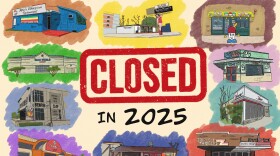-
Kafka was an organizer with ADAPT — American Disabled for Attendant Programs Today — a group which advocates for policy change to support people with disabilities. He died at his Austin home on Friday.
-
Parking, animal protection and garbage calls led the city's requests to 311 for service in 2025.
-
Samuel Grey Horse lost his home to a fire at the start of the year. Then, in November, one of his horses died. Despite his personal challenges, Grey Horse is still dressing up like Santa and spreading joy this Christmas season.
-
From Trudy's last remaining location to Jim-Jim's Water-Ice, here are 10 places that called it quits this year. Some cited rising costs and tariffs as reasons for their closure, while others noted competition from national retailers and businesses with more capital flooding the market made it hard to continue operating.
-
The founder and chief surgeon of the Stuffed Animal Rescue Foundation says she started off just wanting to do weird things with stuffed animals. Then it became a mission.
-
Ely's long recording career was marked by eclecticism, especially once he began recording independently. He always followed his own muse and was unafraid of the occasional misfire.
-
Mortgage rates, home prices and an increase in homes for sale contributed to price stability and predictability for buyers and sellers.
-
Cooksey died Monday at the age of 92. He served as Austin mayor in the late 1980s, leaving his mark as a champion for water quality and protection.
-
Ely was a beloved Texas musician for five decades. He led a group of artists raised in Lubbock who made their way to Austin, the "Live Music Capital of the World."
-
Austin Mayor Kirk Watson and Travis County Judge Andy Brown say their winter weather plans include minimizing power outages, keeping roads safe and opening places for people to stay warm during the day and overnight.
-
A year after the state blocked transgender Texans from updating their state IDs, it has collected information on more than 100 people who have tried. Officials won’t say what they’re using the list for.
-
KUT photographers share their favorite photos of the year.















